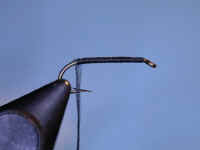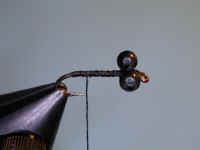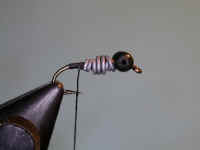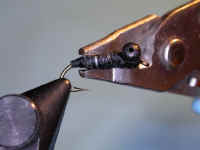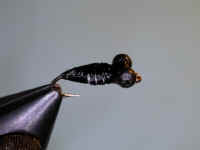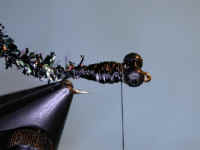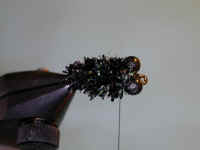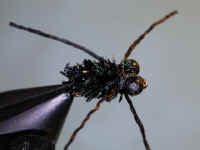|
Fly of the Month Bob Ireton brings together his experience in fly fishing, aquatic entomology, and knowledge of fly tying techniques and materials, to design and tie durable and effective flies. |

|
![]()
Volume 4, Issue 7
July 2003
![]()
DRAGONFLY NYMPH
Fly,
Text, and Photography by Bob Ireton
The larval stage of the dragonfly is an extremely important food source for fish living in slow-moving, weed-rich streams, ponds, sloughs, and lakes. The nymph cycle typically lasts from two to four years, which means they are present and available to fish all year. And since the dragonfly nymph is very predacious, it moves around enough to attract the fish. At 3/4" to 2" long, they make a nice meal.
Dragonfly nymphs are capable of crawing, darting, and free swimming. They typically live and hunt around aquatic plants, rough rubble, heavily sedimented bottoms, or submerged tree limbs or roots. If you fish water with this type of habitat, this is a 'must have' pattern. Fish this fly with a slow retrieve deep in this structure, and you should have good results.
MATERIAL LIST
Hook - Mustad AC3906B, Dai-Riki 060,
Daiichi 1560, Orvis 167T. Size - 12
Thread - Black 6/0 & 3/0
Eyes - Black bead chain, size medium.
Weight - .025 lead wire.
Body - Fine black pearl chenille estaz.
Legs - Black flex- floss, or equivalent.
TYING STEPS - click on pictures for larger view
![]()
Copyright © 1998 - thisyear The Buckeye United Fly Fishers, Inc. Cincinnati, OH 45242
The Buckeye United Fly Fishers, Inc is a non-profit corporation organized under section 501(c)(3) of the Internal Revenue Code, incorporated in the State of Ohio for the preservation, conservation and wise use of our fishing waters and game fish; and to assist in the protection and improvement of our natural resources
